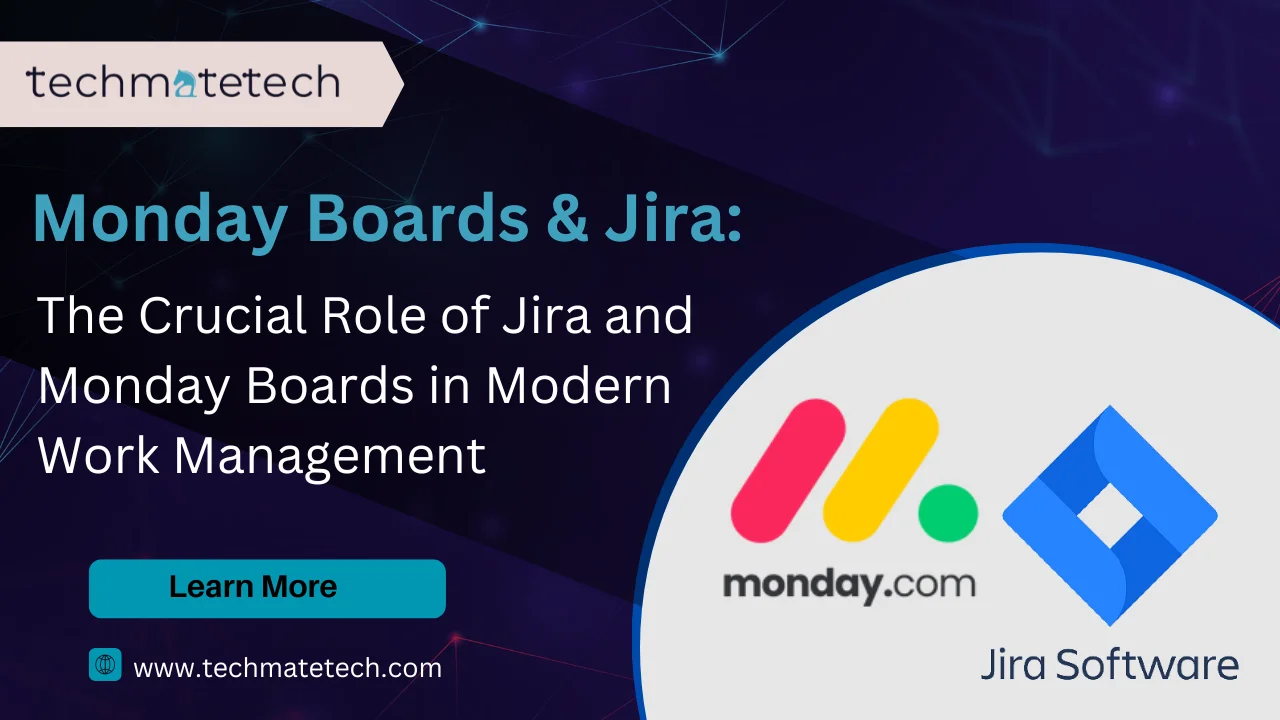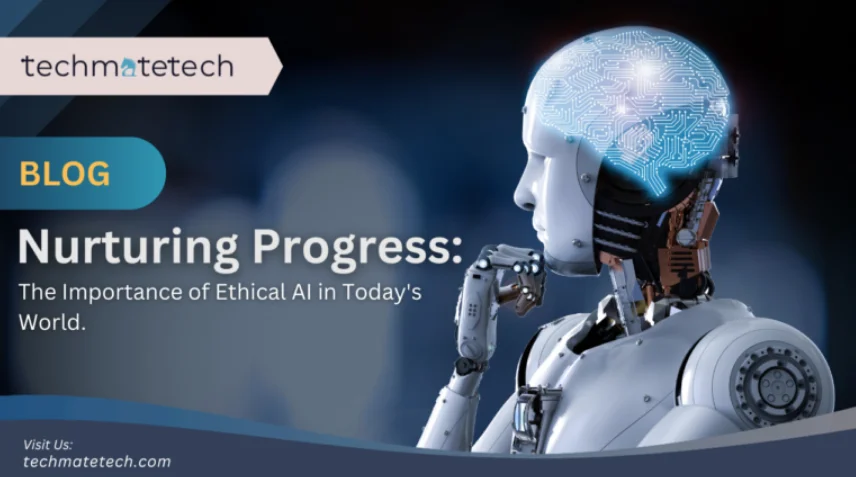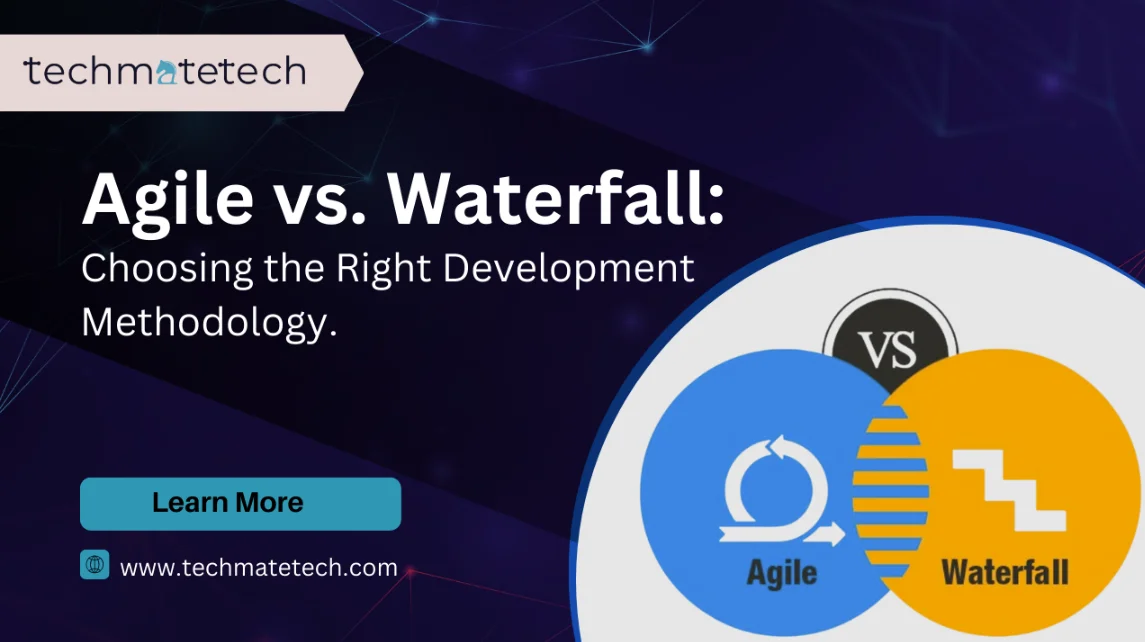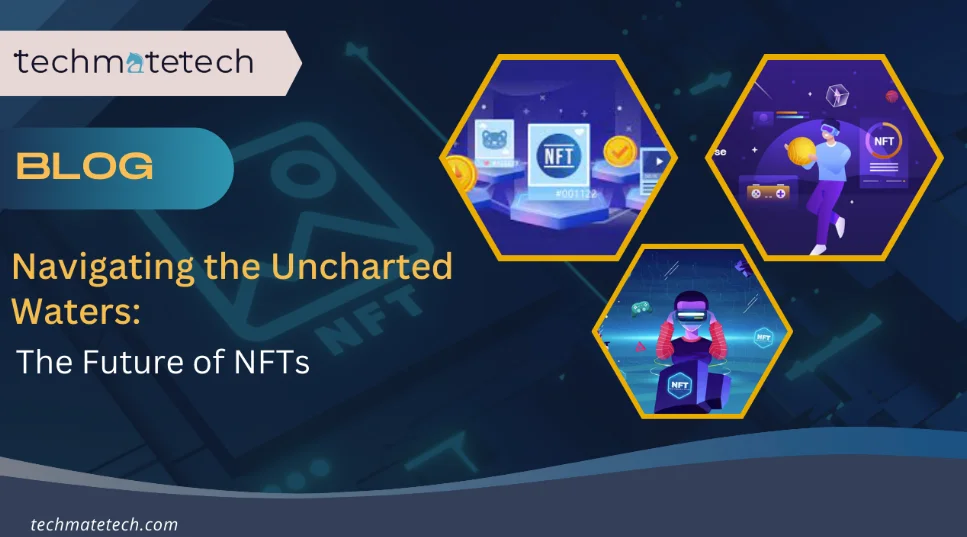Month: December 2023
The Crucial Role of Jira and Monday Boards in Modern Work Management

The Crucial Role of Jira and Monday Boards in Modern Work Management:
In the dynamic landscape of modern work management, staying organized, efficient, and focused on goals is paramount. Two powerful tools, Jira and Monday Boards, have risen to prominence, playing a pivotal role in helping teams streamline their processes and drive productivity.
These platforms offer a centralized hub for task management, collaboration, and project tracking. But why are they so essential? Let’s delve into the importance of using Jira and Monday Boards in today’s fast-paced work environments.
Efficient Task Management:
Jira and Monday Boards are exceptional in helping teams manage tasks efficiently. They offer visual task boards where you can create, assign, and track tasks with ease. This visual representation enhances clarity and simplifies the delegation of responsibilities.
In an era where multitasking is the norm, having a well-organized task management system can be a game-changer. Jira and Monday Boards not only allow for easy task creation but also provide customizable workflows that align with your team’s unique processes. This flexibility is invaluable for boosting productivity.
Enhanced Collaboration:
Modern work is often a collaborative effort. Teams can be dispersed across different locations, making effective communication and collaboration a priority. Jira and Monday Boards facilitate this through features like real-time updates, commenting, and file sharing.
Collaborative tools like these foster teamwork, keeping everyone on the same page. Project updates are visible to all team members, reducing the risk of misunderstandings or missed information. Whether you’re in the office or working remotely, these platforms provide a digital space for seamless collaboration.
Project Tracking and Accountability:
Tracking progress and holding team members accountable are crucial aspects of project management. Jira and Monday Boards offer robust features for project tracking, including timelines, milestones, and progress bars. These visual aids help team members stay informed about project status and deadlines.
Accountability is also enhanced through these platforms. Team members can see who is responsible for each task, and managers can easily identify bottlenecks or areas where additional support is needed. This transparency fosters a sense of ownership and responsibility within the team.
Customization to Fit Your Workflow:
One of the standout features of Jira and Monday Boards is their adaptability. Workflows can be tailored to your organization’s unique needs. This customization is essential because no two businesses work the same way. Whether you’re in software development, marketing, or any other industry, these platforms can be configured to align with your specific processes.
The ability to create custom fields, design workflows, and set automation rules ensures that Jira and Monday Boards adapt to your requirements rather than forcing you to adapt to them.
Data-Driven Decision Making:
In the age of data, making informed decisions is vital. Jira and Monday Boards provide comprehensive analytics and reporting features. These insights can help teams assess performance, identify bottlenecks, and make data-driven decisions to improve their processes.
By tracking and analyzing project data, teams can continuously refine their workflows, leading to increased efficiency and better outcomes. Data-driven decision making is a cornerstone of success in today’s competitive business environment.
Conclusion:
In the modern world of work, where speed and adaptability are essential, tools like Jira and Monday Boards have become indispensable. They offer efficient task management, foster collaboration, and provide the means to track progress and make data-driven decisions. The ability to customize these platforms to your workflow is a significant advantage, ensuring that they are a seamless fit for your organization. Embracing these tools is a strategic move that can significantly enhance your team’s productivity and overall success in the fast-paced business landscape.
Nurturing Progress: The Importance of Ethical AI in Today’s World

Nurturing Progress: The Importance of Ethical AI in Today's World
Introduction:
In an era influenced by technological advancements, the combination of Artificial Intelligence (AI) has become global, transforming the way we live, work, and connect. However, as we dive headlong into this ethical AI-driven future, the ethical implications of its use demand careful consideration. In this blog, we explore the profound importance of ethical AI, emphasizing the need for responsible development and deployment.
Upholding Human Values:
At the core of ethical AI lies a pledge to protect human values. The use of AI should be guided by principles that prioritize justice, transparency, and responsibility. By implanting these values into AI systems, we ensure that technological progress aligns with our collective moral compass.
Amidst the relentless pursuit of innovation, it is crucial to acknowledge that AI is a tool crafted by humans. Hence, the creators of AI bear an ethical responsibility that cannot be overstated. Ethical AI development should be rooted in a commitment to fairness, ensuring that algorithms refrain from perpetuating biases or engaging in discrimination against specific individuals or groups. Equally essential is transparency in the design and decision-making processes of AI models to build trust and ensure accountability.
Mitigating Bias for Inclusive Solutions:
One of the critical challenges in AI development is the potential for bias to seep into algorithms, reflecting and continuing existing societal prejudices. Ethical AI demands a vigilant effort to remove unfairness and create inclusive solutions that benefit all members of society.
Bias in AI can yield far-reaching consequences, magnifying existing inequalities and perpetuating stereotypes. Consequently, ethical AI necessitates rigorous testing and continuous refinement to identify and rectify biased patterns in data and algorithms. By championing diversity within AI development teams and incorporating perspectives from various communities, we can craft more inclusive solutions catering to the needs of a diverse population.
Fostering Accountability in AI Systems:
Ensuring accountability in AI systems is a keystone of ethical AI. Developers, organizations, and policymakers must work together to establish frameworks that hold AI responsible for its decisions and actions.
As AI systems attain greater autonomy and make decisions with profound societal implications, the need for accountability becomes paramount. Ethical AI involves establishing clear lines of responsibility for the outcomes of AI applications, encompassing mechanisms to understand, explain, and, if necessary, rectify the decisions made by AI systems. By fostering a culture of accountability, we can adeptly navigate the ethical challenges associated with deploying AI across various domains.
Conclusion:
In conclusion, the importance of ethical AI cannot be exaggerated in our rapidly evolving technological landscape. Keeping human values, mitigating bias, and fostering accountability are crucial steps in ensuring that AI serves as a force for positive change. We pave the way for a future where AI enhances our lives while respecting the inherent dignity and rights of every individual by embracing ethical principles.
Agile vs. Waterfall: Choosing the Right Development Methodology


Agile vs. Waterfall: Choosing the Right Development Methodology
Introduction:
In the ever-evolving landscape of software development, one crucial decision can significantly influence the success of a project – the choice of a development methodology. Among the many options, two prominent methodologies, Agile and Waterfall, stand out. The selection between these methodologies is not a one-size-fits-all decision but one that must be tailored to the specific needs and goals of your project.
In this blog, we’ll dive deep into the differences between Agile and Waterfall, exploring their principles, advantages, and when to use each.
Understanding Agile Methodology:
Agile methodology is characterized by its flexibility and iterative nature. It’s a collaborative approach where projects are divided into smaller, manageable parts, known as sprints. These sprints allow for continuous development and frequent reassessment, making it easier to adapt to changes. The core principles of Agile emphasize customer collaboration, responding to change, and delivering functional software incrementally. Agile thrives in dynamic environments and is excellent for projects where requirements may evolve over time.
The Waterfall Approach:
In contrast, the Waterfall methodology follows a linear, sequential path. Projects are divided into distinct phases, each dependent on the completion of the previous one. It’s a methodical approach that includes stages like requirements gathering, design, development, testing, and maintenance. Waterfall is known for its thorough documentation and well-defined processes. This structured approach is suited for projects with stable requirements and minimal expected changes.
Key Differences:
The choice between Agile and Waterfall is not a trivial one. It’s essential to understand their key differences to make an informed decision. Agile embraces change and encourages client involvement throughout the project. Waterfall, on the other hand, is characterized by its rigid structure and sequential progression. It’s important to consider the project’s adaptability, client collaboration, and documentation requirements when choosing between the two.
In Agile, project planning is dynamic, and changes can be incorporated at any stage. In Waterfall, detailed planning is done upfront, making changes more challenging as the project progresses. Agile projects are often less reliant on comprehensive documentation, while Waterfall mandates thorough documentation at every stage.
When to Choose Agile:
Agile is the ideal choice for projects that require flexibility and adaptability. When your project’s requirements are likely to evolve during development, and when frequent client feedback is essential, Agile shines. It’s favored in industries like software startups, web development, and mobile app development, where speed and responsiveness are key.
For example, a startup building a new software product may opt for Agile. This methodology allows them to release a minimum viable product quickly, gather user feedback, and iteratively improve the product.
When to Choose Waterfall:
Waterfall is better suited to projects with well-defined, stable requirements. It’s commonly used in industries like construction, manufacturing, and government projects. When regulatory compliance and meticulous documentation are paramount, Waterfall is a dependable choice.
Consider a government infrastructure project, such as building a bridge. The requirements and design are unlikely to change significantly once the project begins, making Waterfall a suitable approach.
Combining Agile and Waterfall (Hybrid Approaches):
In some cases, the best solution may not be purely Agile or Waterfall. Hybrid methodologies combine elements of both to leverage their strengths. For instance, a project might use Agile for initial development and requirements gathering, then switch to a Waterfall approach for the final documentation phase. Hybrid approaches offer the benefits of adaptability and structured documentation.
Making the Decision:
Choosing between Agile and Waterfall should be a well-informed decision based on your project’s unique requirements. Consider factors like project complexity, client preferences, and the expertise of your development team. It’s important to remain adaptable and be open to transitioning between methodologies when project needs evolve.
Conclusion:
In the world of software development, there is no one-size-fits-all approach. Agile and Waterfall are two methodologies that cater to different project requirements and client preferences. The key is to carefully evaluate your project’s specifics, weighing factors such as adaptability, client involvement, and documentation needs. Making an informed decision will set your project on a path to success, whether you choose the dynamic and collaborative nature of Agile or the structured, well-documented path of Waterfall. Remember that adaptability is key in an ever-changing landscape.
